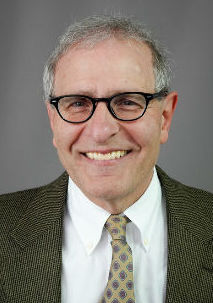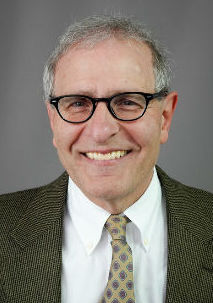EL SEGUNDO, CA – As director at El Segundo, Calif-based Secretariat, Wayne H. Kalayjian, PE, SE, CFE, works to solve construction-related dilemmas, delays, disruptions, and cost overruns. Within the context of the global pandemic, it’s meant an uptick in work. And yet, much of the remote work necessitated by the pandemic is lacking that crucial in-person interaction. “We need the white noise of the office,” Kalayjian says. “Based on my experience with remote interaction over these last 6 months, I believe there are adverse consequences, particularly for younger workers.”
Kalayjian cites five consequences of prolonged remote work: 1) reduced quality of work; 2) reduced creativity; 3) reduced opportunity for mentoring and learning; 4) reduced motivation for professional development; and 5) reduced chances for internal organizational advancement.
Third Thursday had a chance to sit down with Kalayjian, a three-time presenter at Construction Super Conference, to learn more about what has been lost during these recent (and strange) months.
Third Thursday: Tell me a bit about your work experience in the office setting.
Kalayjian: I’ve been around. I’ve been in this business since 1978, so I’m very used to working in an office, whether it’s in this type of business or project engineering, project management, or construction oversight. I’ve worked at large corporate environments where you’re often visiting corporate clients in their home office or their satellite.

Third Thursday: How do those environments influence the work flow?
Kalayjian: Being in an office, or a trailer, or at a construction site you are focused on a particular series of goals. Your role is to help solve a particular aspect of that mission, and being in the office you’re around a group of people who might be part of your mission, or part of other missions. Being around in that environment, you invariably interact with people where you overhear conversations.
Whether it’s conscious, unconscious, or subconscious you are gathering background information. Being in an office, you become familiar with people, personalities, projects, and roles. You learn the strengths and weaknesses of particular individuals. Over time, this white noise becomes ingrained into your unconscious. It helps you understand the organization and where you might fit in.
Third Thursday: And how has that changed in recent months?
Kalayjian: By being out of the office in the way we have, I’ve observed that all that knowledge gathering is gone. People are no longer connected. They’re disjointed and they’re focused only on the immediate mission that they’ve been asked to do.
Third Thursday: How does that affect new people and those who are more senior?
Kalayjian: If you’re in a senior role and you’ve been around the block, and you know how projects work or how organizations work, you know what to do to stay relevant to understand how the pieces of the organization fit together. You know who to contact to continue to enforce that continuum. However, I don’t think that that works for younger people. I think younger staff are more focused on what do I need to do? They reach out to me or the other sort of project leaders and ask, ‘What do I need to do?’ This has adversely impacted the quality of the work, the creativity, and the opportunity for learning. Opportunities for mentoring are reduced.
Third Thursday: How much are you working at the office these days?
Kalayjian: I work from the office as much as I can, if only to get away from the house. People are saying, ‘I don’t want to go in the office,’ not because they might get sick, but because it’s not convenient anymore. They say, ‘I’m so used to working in my pajamas and in my home space’ where they don’t have to necessarily be concerned grooming. It’s sort of much easier to stay in our home cocoons and do our work. However, we’re losing the opportunity to mentor and to have brainstorming sessions face-to-face.
Those learning opportunities by the by the water cooler are totally being lost. Here we are going into year-end, and for many organizations, people are thinking about promotions. It’s not so far away that January 1st will be here, and many organizations have promotions effective on January 1. I’m at a disadvantage here because it can be difficult to know if staff members are ready for the next level. I haven’t had a chance to have face-to-face contact. We have zoom and other communication platforms, and those have been very valuable. But it’s very hard for me to evaluate whether or not you’re ready for the next step.
Third Thursday: How does the white noise factor into promotions?
Kalayjian: I think that all this is part of the white noise. When you promote someone, it’s not just their technical skills. It’s how do they fit into the organization and what’s their professional path for development? What are their strengths and opportunities for improvement? Not having that white noise around is really a disadvantage for evaluating a person.
I’m not saying we should avoid the impact of COVID and ignore the requirements of being safe. I am saying though that there have been opportunities for people to come into the office and be safe once or twice or three times a week. I also realize it might be different if you’re in an office tower right where there’s elevator concerns and parking issues and public transit concerns. In my environment, none of those issues are in effect.


